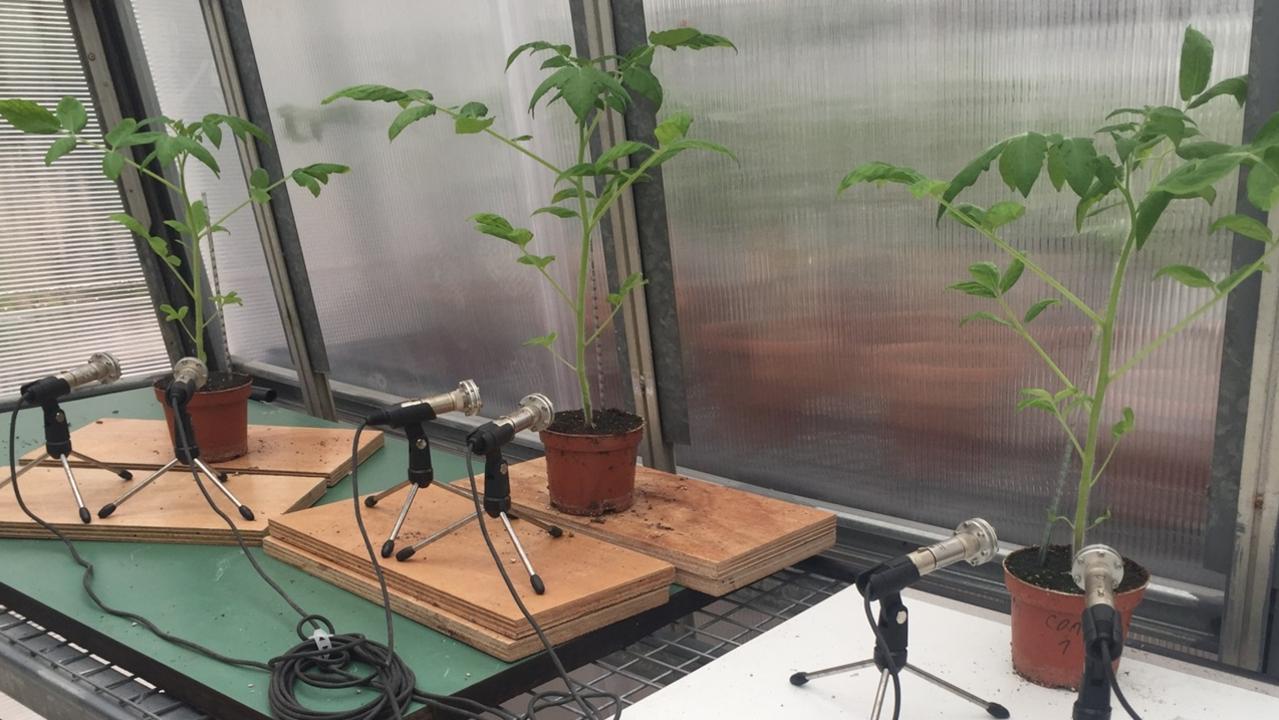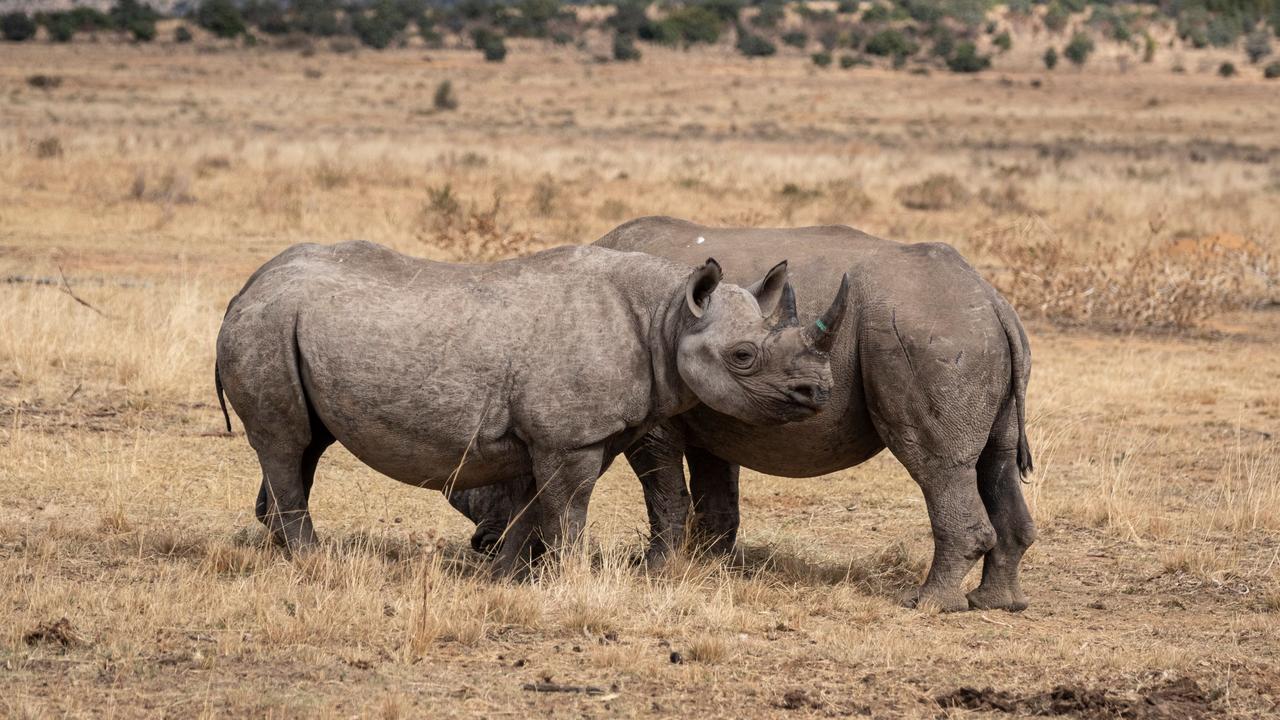Plants ‘yell’ when stressed out, study finds
Thirsty and damaged plants let out noises that sound a bit like popping bubble-wrap, a new study has found. Take a listen

READING LEVEL: GREEN
Plants ‘yell’ out when under stress, new research has found.
An Israeli study has revealed plants make noise a bit like bubble-wrap being popped when they are stressed from a lack of water or having their stems cut.
The plant sounds are about the same volume as normal human conversation, however the pitch is too high for people to hear.
The researchers believe insects, other mammals and maybe even other plants can probably hear the call of the stressed plants.
“Even in a quiet field, there are actually sounds that we don’t hear, and those sounds carry information,” said study senior author Lilach Hadany, from Tel Aviv University.
“There are animals that can hear these sounds, so there is the possibility that a lot of acoustic* interaction* is occurring.”
LISTEN TO THE SOUNDS OF STRESSED PLANTS
The researchers used microphones to record healthy and stressed tomato and tobacco plants, and then trained a machine learning algorithm* to differentiate* between unstressed plants, thirsty plants and cut plants.
The team found that stressed plants emitted* more sounds than unstressed plants.
The stressed plant sounds resembled pops or clicks, and a single stressed plant emitted about 30-50 of these clicks per hour at seemingly random* intervals*.
Professor Hadany said happy plants were found to make far fewer sounds.
“When tomatoes are not stressed at all, they are very quiet,” she said.
The study, published in the journal Cell on March 30, found thirsty plants began making noises before they were visibly dehydrated*, and the frequency of sounds peaked after five days with no water, before decreasing again as the plants dried up completely.
The types of sounds the plants emitted differed according to the cause of their stress.
Although the study focused on tomato and tobacco plants, because of their ease to grow in the laboratory, the research team also recorded a variety of other plant species.
“We found that many plants – corn, wheat, grape and cactus plants, for example – emit sounds when they are stressed,” Professor Hadany said.

The study found sound recordings of plants could be useful in agriculture* to make sure crops were getting enough water and to distribute water where it was needed most.
Exactly how the plants made the noises was unclear, but the researchers suggested it might be due to the formation and bursting of air bubbles in the plant’s vascular* system, a process called cavitation.
Whether or not the plants were producing these sounds in order to communicate with other living things was also unclear.
“It’s possible that other organisms* could have evolved to hear and respond to these sounds,” Professor Hadany said.
“For example, a moth that intends to lay eggs on a plant or an animal that intends to eat a plant could use the sounds to help guide their decision.”
Other plants could also be listening in and benefiting from the sounds, with past research showing plants can respond to sounds and vibrations.
“So now that we know that plants do emit sounds, the next question is ‘who might be listening’,” Professor Hadany said.
“We are currently investigating the responses of other organisms, both animals and plants, to these sounds, and we’re also exploring our ability to identify and interpret* the sounds in completely natural environments.”
GLOSSARY
- acoustic: to do with sound and hearing
- interaction: when two or more people or things communicate with or react to each other
- algorithm: a set of mathematical instructions or rules that, especially if given to a computer, will help calculate an answer to a problem
- differentiate: to show or find the difference between things
- emitted: produced, made, let out
- random: happening without a pattern, plan or purpose
- intervals: periods between two events or times
- dehydrated: not having enough water for good health
- agriculture: the growing of food to feed the population
- vascular: to do with the vessels, or tubes, that carry fluids around a living thing
- organisms: living things, including plants and animals
- interpret: explain the meaning of
EXTRA READING
Monster prehistoric Aussie plant discovered
French fungus to the rescue of little penguins
Seed bank saving rare native plants from bushfire threat
QUICK QUIZ
- What two stressful situations made the plants make noise?
- What did the noises sound like?
- Why can’t humans hear the noises?
- What two types of plants made the noises?
- How many noises per hour did a single stressed plant make?
LISTEN TO THIS STORY
CLASSROOM ACTIVITIES
1. What would they say?
Write a script for a conversation between two plants on a typical day. Your purpose is to write about what life is like for them. Choose any type of plants: flowers or shrubs in a garden, vegetable plants on a farm, trees in a forest, weeds on the roadside … even a combination of different plants. Use your imagination!
Time: allow 20 minutes to complete this activity
Curriculum Links: English, Science
2. Extension
The experts have some theories, but how and why do you think plants make sounds? Brainstorm as many ideas as you can and write them down.
Time: allow 15 minutes to complete this activity
Curriculum Links: English, Science
VCOP ACTIVITY
Talking plants
Imagine if we could hear plants talking! What would the plants around your classroom, school or house say?
Could you write a short dialogue between two plants close to you? What are they saying and why?
They say that talking to your plants helps them to grow, so do you think they can hear and understand you? Would you have a conversation back if you knew they could talk or could understand you?
Re-read your work before you share it with a partner.
Extension
Turn your dialogue into a short play. Decide if you will add costumes. Decide if you want to write a new script and use the conversation between the plants to get a message across to everyone. What would your message be?
Present your play to your class, either live or via a recording.

